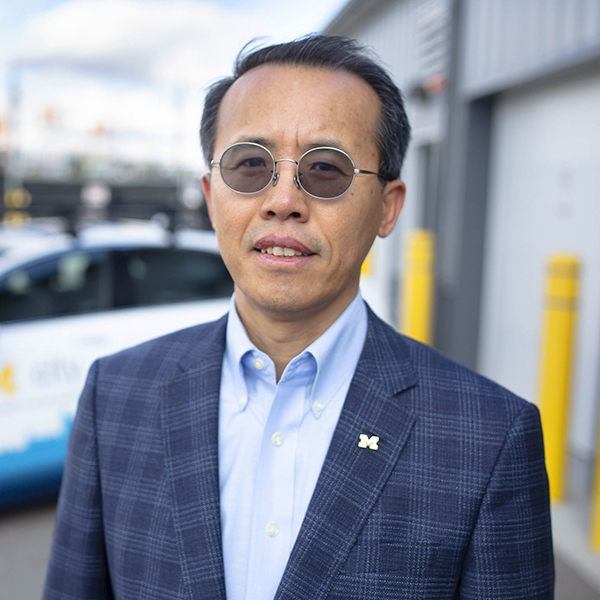Development of An Augmented Reality Environment for Connected and Automated Vehicle Testing
Principal Investigator(s):
Henry Liu, Director – Center for Connected and Automated Transportation (CCAT)
Director – Mcity
Professor of Civil and Environmental Engineering – The University of Michigan
Research Professor – The University of Michigan Transportation Research Institute
Yiheng Feng, Assistant Research Scientist – The University of Michigan Transportation Research Institute
Project Abstract:
Currently closed CAV testing facilities (such as Mcity) merely provide empty roadways, in which test CAVs can only interact with each other and infrastructure (e.g. traffic signals). However, a complete testing environment should also include background traffic to interact with the test CAVs. Involving real vehicles as background traffic is not only costly, but also difficult to coordinate and control. To address the limitation, in this project we develop an augmented reality testing environment, in which background traffic is generated in microscopic simulation and provided to test CAVs to augment the functionality of the test facility. The augmented reality combines the real-world testing facility and a simulation platform, in which movements of test CAVs and traffic signals in the real-world can be synchronized in simulation, while simulated traffic information can be provided to test CAVs’ communication system. Test CAVs “think” they are surrounded by other vehicles and adjust behaviors accordingly. This technology provides a realistic traffic environment to the CAVs, so that test scenarios which require interactions with other vehicles or pedestrians can be performed. Compared to using real vehicles, simulated vehicles can be easily controlled and manipulated in generating different scenarios with much less cost and safety concerns.
Institution(s): University of Michigan Transportation Research Institute
Award Year: 2017
Research Thrust(s): Enabling Technology, Modeling & Implementation
Project Form(s):



